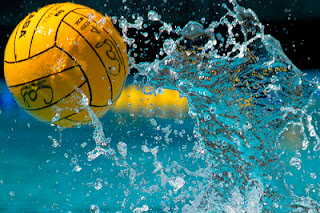One aspect of my work with the Town Square sections of the Daily Press that has made things interesting is the variety of topics to cover. I have covered youth wrestling and football, a karate school, golf museum, and fishing tournament, among other things. Here's a recent article about a local middle school group of archers who earned a trip to their national tournament.
The Gildersleeve
Middle school archery team concluded a successful season by participating in
the NASP Nationals, held last month in Louisville, KY.
The National Archery
in the Schools Program (NASP) is a joint venture between the state departments
of education and Game and Island Fisheries. The program promotes student
education, physical education and participation in the lifelong sport of
archery.
In all, 23 archers
represented Gildersleeve at Nationals. Twelve seventh and eighth graders
combined to form the Middle Division (grades 7-8) team, while 11 sixth graders
made up the Seahawk Elementary (sixth grade and younger) team. Since 12 results
are required to tally a team score, only the Middle Division team earned a
place at Nationals, scoring 83rd of 158 teams.
Three archers, Josh
Cerny (59th), Andres Amundson (87th) and Anthony Hall (87th)
placed in the top 100 for their grade.
To earn a spot at
nationals, the team, coached by Steve Cretacci, placed third in the middle
school division at the Virginia state championship, which was held in Doswell
on March 16. On that day, two Seahawk archers, Hall and Cerny both qualified
for the shoot off event to determine the best shooter in the state. Hall earned
a third place finish in the sixth grade category while Cerny posted the highest
score among middle school competitors and third overall (high school archers
were also represented).
Earlier in the season,
at the NNPS tournament, the archers easily defended their city title, sweeping
the middle school category for boys and girls. Cerny won the boys division,
followed by teammates Amundson and Justin Kellerup. Heather Dye captured the
girls top spot, with Brittany Robinson and Ashley Weiss earning second and
third places.
Archery, in the form
of NASP, was introduced to Newport News schools in 2006. The sport is a part of
physical education instruction at all of the city’s middle and high schools,
and was recently expanded as a club activity for fourth and fifth graders.
Gildersleeve
participants in the NASP competition:
Elementary Division
(grade 6)
Eric Young
Moe Taha
Jimmy Reinshagen
Ben Long
Evan Isham
Anthony Hall
Kendall Downing
Destiny Dixon
Jacob Cinn
Juliana Cerny
Ashley Armstead
Middle Division (grades 7-8)
Josh Williams
Ashley Weis
Andrew Warren
Matt Scarberry
Brittany Robinson
Justin Kellerup
Asya Harris
Heather Dye
Chloe Childress
Josh Cerny
Crystal Bennett
Andres Amundson










